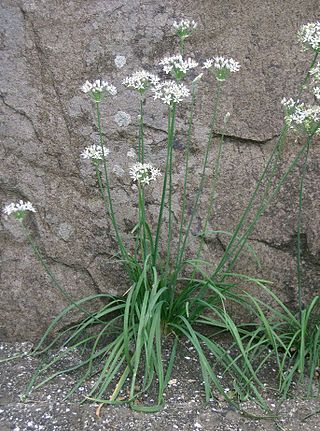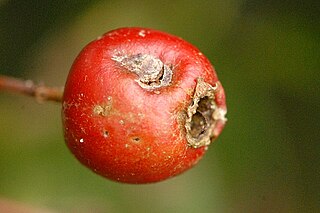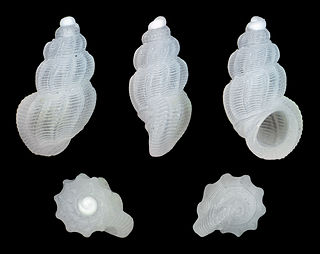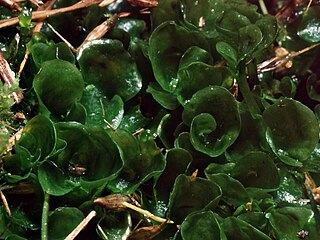
Bubble and squeak is a British dish made from cooked potatoes and cabbage, mixed together and fried. The food writer Howard Hillman classes it as one of the "great peasant dishes of the world". The dish has been known since at least the 18th century, and in its early versions it contained cooked beef; by the mid-20th century the two vegetables had become the principal ingredients.

French fries, chips, finger chips, french-fried potatoes, or simply fries are batonnet or allumette-cut deep-fried potatoes of disputed origin from Belgium or France. They are prepared by cutting potatoes into even strips, drying them, and frying them, usually in a deep fryer. Pre-cut, blanched, and frozen russet potatoes are widely used, and sometimes baked in a regular or convection oven; air fryers are small convection ovens marketed for frying potatoes.

A potato chip or crisp is a thin slice of potato that has been deep fried, baked, or air fried until crunchy. They are commonly served as a snack, side dish, or appetizer. The basic chips are cooked and salted; additional varieties are manufactured using various flavorings and ingredients including herbs, spices, cheeses, other natural flavors, artificial flavors, and additives.

Elias Magnus Fries was a Swedish mycologist and botanist. He is sometimes called the "Linnaeus of Mycology". In his works he described and assigned botanical names to hundreds of fungus and lichen species, many of which remain authoritative today.

Deep frying is a cooking method in which food is submerged in hot fat, traditionally lard but today most commonly oil, as opposed to the shallow oil used in conventional frying done in a frying pan. Normally, a deep fryer or chip pan is used for this; industrially, a pressure fryer or vacuum fryer may be used. Deep frying may also be performed using oil that is heated in a pot. Deep frying is classified as a hot-fat cooking method. Typically, deep frying foods cook quickly since oil has a high rate of heat conduction and all sides of the food are cooked simultaneously.

Stephen John Fry is an English actor, broadcaster, comedian, director, narrator and writer. He first came to prominence as one half of the comic double act Fry and Laurie, alongside Hugh Laurie, with the two starring in A Bit of Fry & Laurie (1989–1995) and Jeeves and Wooster (1990–1993). He also starred in the sketch series Alfresco (1983–1984) alongside Laurie, Emma Thompson and Robbie Coltrane, and in Blackadder (1986–1989) alongside Rowan Atkinson. Since 2011, he has served as president of the mental health charity Mind.

Allium tuberosum is a species of plant native to the Chinese province of Shanxi, and cultivated and naturalized elsewhere in Asia and around the world.

Milt is the seminal fluid of fish, mollusks, and certain other water-dwelling animals which reproduce by spraying this fluid, which contains the sperm, onto roe. It can also refer to the sperm sacs or testes that contain the semen.

The GER Class G58 is a class of 0-6-0 steam tender locomotives designed by James Holden for the Great Eastern Railway in England. The class consisted partly of new locomotives built from 1905 to 1911 and partly of rebuilds of the earlier GER Class F48 built from 1900 to 1903. The rebuilding started under GER auspices from 1921 and was continued by the London and North Eastern Railway (LNER) after grouping in 1923.

Elimia is a genus of freshwater snails with an operculum, aquatic gastropod mollusks in the family Pleuroceridae. Various species are found in creeks throughout much of the eastern and central United States and the Great Lakes region of Canada. Fossils have been found across the whole of the North American continent, including from the Paleocene of Mexico and the Eocene of California. They were formerly included in the genus Goniobasis, together with the western Juga species.
Elimia gibbera was a species of freshwater snails with an operculum, aquatic gastropod mollusks in the family Pleuroceridae. This species was endemic to the United States. It is now extinct, the attributed cause is land-use change.

The Venturiaceae are a family of fungi in the order Venturiales. Several of the species in this family are plant pathogens.

Venturia is a genus of fungi in the family Venturiaceae. First identified in 1882, species in the genus are plant pathogens. Venturia is widespread and the genus contains an estimated 58 species, or 130 species. Anamorphs were historically represented in the genus Fusicladium.
Pleurotomella gibbera is a species of sea snail, a marine gastropod mollusk in the family Raphitomidae.

Manzonia is a genus of minute sea snails, marine gastropod mollusks or micromollusks in the family Rissoidae.

Trapania gibbera is a species of sea slug, a dorid nudibranch, a marine gastropod mollusc in the family Goniodorididae.
Hypsioma is a genus of longhorn beetles of the subfamily Lamiinae, containing the following species:

Pallaviciniales is an order of liverworts.
Okanagana gibbera is a species of cicada in the family Cicadidae. It is found in North America.

Okanagana is a genus of cicadas in the family Cicadidae. There are at 58 described species in Okanagana.















